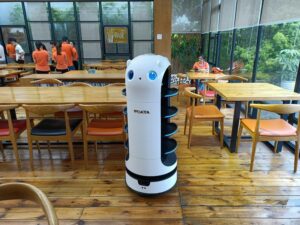Introduction: The Future That Never Came
When people in the past imagined the future, they pictured flying cars, robots doing chores, and vacations on Mars. Books, movies, and even science magazines showed a world where everything looked shiny, fast, and way more advanced than today. But now that we’re in the 2020s, a lot of those things still don’t exist. Why is that?
This post is all about exploring why the amazing inventions from sci-fi and future art haven’t really come true — at least, not the way we thought they would.
Imagination vs. Reality
Writers, artists, and filmmakers can imagine anything. They don’t have to worry about real problems like gravity, money, or safety. But engineers and scientists do. They can’t just dream things up — they have to make them actually work. That’s much harder. So while imagination is powerful, reality has rules that we can’t just ignore.
How History Fueled False Hopes
In the 1950s and 1960s, people believed that the future would be full of amazing tech. After all, they saw big changes like cars, airplanes, and space travel happen fast. Magazines and World’s Fairs showed cool inventions like food pills and space hotels. But a lot of those ideas were just fun guesses. People mistook fun predictions for actual plans.
The Flying Car Fallacy

Flying cars are in almost every futuristic movie. But in real life, they’re super hard to make. A car that flies needs to be lightweight like a plane, but also safe and strong like a regular car. Plus, flying safely in busy cities would be dangerous and confusing. And where would you park a flying car — on the roof?
Cities In the Sky: The Floating Architecture Myth

Imagine whole cities floating in the clouds — sounds awesome, right? The problem is, it takes a huge amount of energy to lift and keep something that big in the air. We also don’t have strong enough materials or engines that can make this idea work safely. Floating cities might always stay in the world of fiction.
Jetpacks and Personal Flight Devices`

Jetpacks do exist, but they aren’t like the ones in movies. They only fly for a few minutes, are super expensive, and are really hard to control. Most people would crash within seconds. That’s why we don’t all fly to school with jetpacks. Bikes are way easier — and a lot safer.
Teleportation, Time Travel & Other Physics-Breakers

Teleportation and time travel are fun to think about, but they go against what we know about Physics. Scientists can teleport tiny particles using quantum science, but not people. Time travel causes problems like paradoxes — like what happens if you go back in time and change something? These ideas are cool, but probably impossible.
Why Smart Cities Aren’t That Smart Yet
People imagined cities that could think — with talking traffic lights, perfect air, and trash that takes itself out. But even today, “smart cities” mostly just mean more cameras and better internet. Making a whole city smart is super expensive, and not everyone agrees on how to do it. Change is slow, especially for big cities.
Material Science: Still Catching Up
Futuristic stuff often needs materials we haven’t invented yet. Things like invisible armor or walls that fix themselves sound amazing, but we don’t have the tech to make them. Even new materials like graphene are hard to make in large amounts. Until scientists figure that out, our buildings and gadgets will stay pretty normal.
Energy Limitations and the Fossil Fuel Trap

Almost every cool future idea needs lots of energy. But we still depend on gas, oil, and coal — and that pollutes the Earth. Cleaner energy, like solar and wind, is growing, but it’s not fast enough yet. Until we have better batteries or maybe fusion energy, we just don’t have the power for all those wild inventions.
The Regulatory and Bureautic Bottleneck
Even if a new invention works, it has to be tested and approved. Governments have to make sure it’s safe for people and the planet. This takes years, sometimes decades. So while a flying taxi might be possible, it also has to go through tons of rules and laws before anyone’s allowed to use it.
Cultural Inertia: Society is Slow to Change
Sometimes, the problem isn’t the tech — it’s the people. Even when something new is available, we don’t always accept it right away. It took a long time for people to trust online shopping or self-checkout machines. And if a new invention might replace jobs, people push back. We like comfort and routine, not sudden changes.
Economic Realities: Profit Over Progress

Big companies invest in things that make money. That’s why we get new iPhones every year, but not things like flying cars. A lot of sci-fi inventions are too expensive to make or hard to sell. So unless someone can earn money from it, it often stays in the idea phase.
Unforseen Priorities: How Tech Took Different Paths

In the past, people imagined robot servants and space houses. Instead, we got smartphones, video games, and social media. These weren’t part of the old sci-fi future, but they changed our lives just as much. So maybe we did get the future — just not the one anyone predicted.
The Dark Side of Futurism: What We Ignored
Futurism is fun, but it didn’t always think about problems like climate change, pollution, or inequality. A lot of futuristic ideas imagined a perfect world — but our world has real struggles. If we don’t solve today’s issues, it’s hard to build tomorrow’s tech.
Where the Real Innovation Happened
Even though we don’t have floating cars, we’ve made amazing progress: Scientists can edit genes to cure diseases; made satellites that connect the whole world; installed space telescopes that let us look back in time; artificial intelligence is helping us do things faster than ever. These changes may not be flashy, but they’re powerful.
The Role of AI and the New Imagination

AI is one of the most exciting parts of today’s tech. It helps us write, draw, design, and even solve problems. AI lets us dream up things and test ideas without building them first. It’s not a flying car, but it might help us design one someday.
What the Future Actually Might Look Like
The future might not look like a sci-fi movie, but it could still be awesome. We might see: Smart homes that adapt to us; robots that help care for the elderly; green buildings that protect against climate change; medicine that prevents sickness before it starts. That’s a future worth building.
Are We Living In A Slow Future?

Maybe the future doesn’t show up all at once. Maybe it comes slowly, in tiny steps. We carry devices in our pockets that let us talk to anyone around the world. We can ask a machine any question and get an answer in seconds. That’s kind of futuristic, right?
Conclusion: Maybe the Future is Here- Just Not How We Expected It
In the end, the future didn’t fail to arrive. It just came differently than we thought. We imagined silver jumpsuits and space hotels. Instead, we got Wi-Fi, FaceTime, and smart devices. That’s not bad — it’s just different.
The truth is, the future is always being built — piece by piece. And if we stay curious, keep learning, and care about the world, maybe we’ll build something even better than what we imagined.
